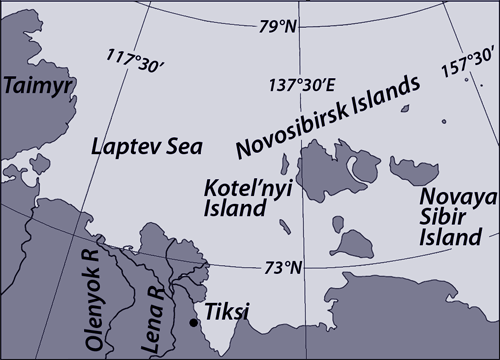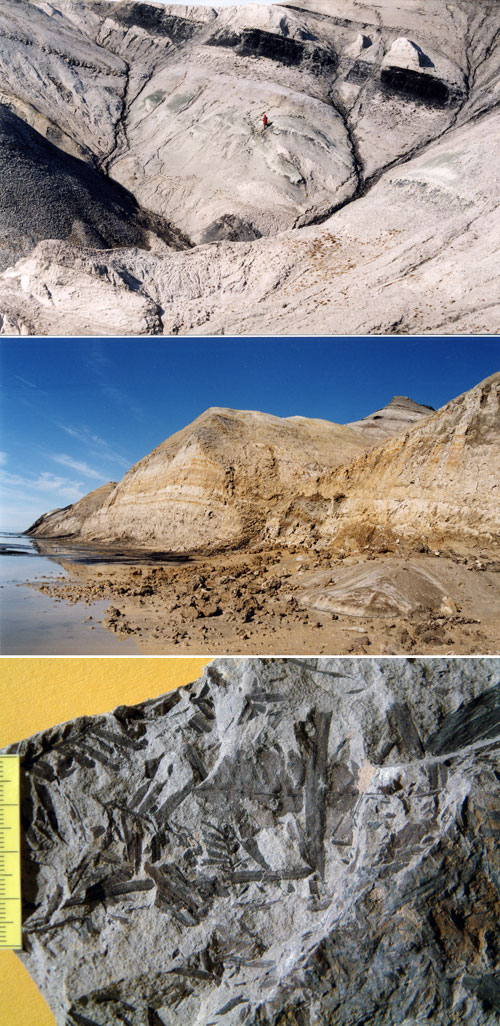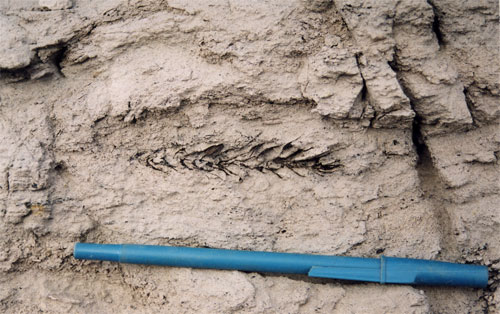Novosibirsk Islands
| Introduction | Novaya Sibir' | Kotyl'nyi | NE Russia Map |
|---|
On a map produced in the time of Catherine the Great (1780) a note states that hunters found a green copper vessel and wood on the Novaya Sibir’ archipeligo, hence the name of one of the Islands was given as “Kotlel’nyi”. In 1886 Baron Eduard von Toll (1858 - 1902) visited Novaya Sibir' Island as a geologist on an expedition, organised by Russian Academy of Sciences and led by A. Bunge. The purpose of the expedition was multidisciplinary, and included topographic mapping and geology. This was the first scientific expedition to the islands. In the spring of 1886 Bunge and Toll crossed the ice and came to Bolshoi Lyakhovskii Island after which Bunge went to Kotel’nyi Island before returning to Bolshoi Lyakhovsky where Toll built a base camp from driftwood. Toll subsequently studied Zemlya Bunge Island and Faddeevskii Island and the western part of Novaya Sibir where he collected plant fossils. In November 1886 fieldwork finished and Bunge and Toll returned to St. Petersburg. In 1893 Toll joined a second expedition but Novaya Sibir' was not visited. In 1900 Toll set out for the Islands again but in 1902 the expedition disappeared searching for an undiscovered island because they saw birds going north from Novya Sibir' archipeligo. In 1903 the Russian Academy of Sciences sent out a rescue expedition to Toll’s last base, a driftwood house on Bennett Island with Toll’s last letter addressed to the Academy in St. Petersburg. In the letter he provided a geological description of Bennett Island and fossil plants (conifers) found by the expedition members. At the end of the letter he says that he and 3 others are going south, that everything was well and that they had food for 14 - 20 days. Von Toll and rest of the expedition were never found. The area remained virtually unknown to science until the summer of 1961 when a small party of paleobotanists from St Petersburg, led by Prof. L. Budantsev, returned to Novaya Sibir’. They collected virtually unaltered leaves and wood from uncompacted peats in non-marine successions in the southwestern coast of the Island at Utyos Derevyannyh Gor locality. The floral composition allowed Budantsev to date the assemblages as Turonian, a time only poorly represented in the non-marine of the Arctic. The 90 million-year-old leaves were described as “blowing away in the wind” and the wood “smelled of resin”. The exceptional preservation allowed some cuticular studies (Sveshnikova and Budantsev, 1969) but to disagregate the individual leaves the peat was washed in soapy water. Unfortunately this treatment has, over time, resulted in the destruction of the material, particularly the cuticles with stomatal details. |
Interactive map of the Novosibirsk Islands.
Top image: Turonian plant-bearing succession at Utyos Derevyannyh Gor locality, Novaya Sibir' Island Middle: Cliffs at Utyos Derevyannyh Gor section, Novaya Sibir' Island. Bottom: Plant material from the Utyos Derevyannyh Gor locality showing conifer and angiosperm leaf remains.
Conifer female cone embedded in tephra at the Utyos Derevyannyh Gor section locality, Novaya Sibir' Island.
|
|
Turonian fossil wood recovered from the Novosibirsk Islands by the 1886 von Toll expedition. In the summer of 2002, exactly 100 years after the second Toll expedition was lost, an archaeological party of the Russian Academy of Sciences returned to Novaya Sibir'. At our request they photographed the Utyos Derevyannyh Gor section (75°01′05.6′′ N, 147°05′46.6′′ E), made some small fossil collections and sampled the enclosing sediments. As well as the plant fossils the party also recovered for the first time vertebrate remains (a small reptile jaw). These reconnaissance samples indicate a wealth of uniquely preserved data relevant to understanding the nature of the Turonian non-marine ecosystems and climate close to the Late Cretaceous North Pole.
A trochodendroid leaf recovered from Novaya Sibir' Island by von Toll in 1886. |
||





